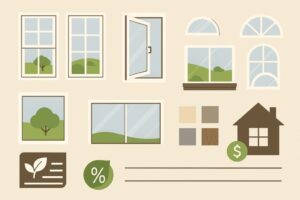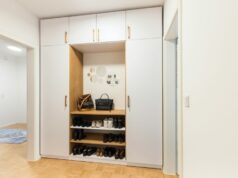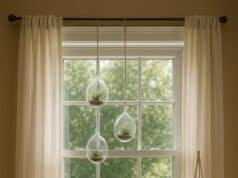Table of Contents:
- Single and Double Hung Windows
- Casement and Awning Windows
- Sliding and Picture Windows
- Bay, Bow, and Specialty Shapes
- Energy Efficiency and Comfort Features
- Choosing Based on Function and Design
- Material Innovations for Modern Needs
- Cost and Value Considerations
Single and Double Hung Windows
Single- and double-hung windows are among the most versatile and popular window styles, and they are prized for their classic look and easy operation. These windows feature one or two movable sashes that slide vertically, making them ideal for bedrooms, living rooms, and historic homes. Double-hung windows are especially favored for allowing fresh air from the top and bottom, helping regulate ventilation all year round. Whether you’re remodeling or building new, working with a knowledgeable window & door contractor ensures your chosen windows are installed for optimal function and weather resistance. Proper installation is critical not only for performance but also for the longevity of the windows and the energy efficiency of your home. A professional contractor can also advise on the best materials and features to suit your specific climate and aesthetic preferences.

Casement and Awning Windows
Casement windows open outward with a crank or lever usually hinged on the side. Their tight seal, when closed, delivers exceptional energy efficiency, making them well-suited for areas exposed to wind or cold. Similar in function but hinged at the top, awning windows open outward while keeping rain out, making them ideal for kitchens or bathrooms where ventilation is important in all weather. According to Department of Energy guidelines, these window styles can reduce drafts and improve indoor comfort.
Sliding and Picture Windows
Sliding windows, sometimes called gliders, provide broad, uninterrupted views and are simple to operate, making them a great solution for wide-wall spaces or modern homes. As they glide horizontally along a track, they’re a favorite for patios, sunrooms, or spaces with limited reach. Picture windows do not open but are designed to capture sunlight and frame outdoor scenes. They’re often installed alongside operable windows for light and airflow, creating an inviting atmosphere in living rooms or stairwells.
Bay, Bow, and Specialty Shapes
Bay and bow windows project outward from the home’s exterior, offering more floor space, a charming nook, or dramatic curb appeal. Typically consisting of three or more panels, these windows are an eye-catching choice for dining areas or lounges looking to make the most of scenic views. Specialty windows, such as circular, arched, or geometric shapes, can become design focal points, highlighting architectural details or adding flair to entryways and hallways. These bespoke options often require expert design and installation to ensure lasting performance and safety.
Energy Efficiency and Comfort Features
The type of window you choose plays a major role in controlling heat, reducing noise, and lowering energy bills. Features like low-emissivity (Low-E) coatings, double or triple-pane glass, and inert gas fills boost insulation and minimize heat transfer. Properly weather-stripped frames and tight seals further protect against drafts and leaks. The latest architectural research highlights how energy-efficient designs are critical for sustainability and increasing day-to-day comfort and home value.
Choosing Based on Function and Design
Selecting the right window style is more than just aesthetics—it’s about function. Kitchen windows benefit from styles that open easily for airflow, while bathrooms may need frosted glass for privacy paired with venting. Bedrooms often use double-hung or casement windows for flexible ventilation. Large communal rooms call for picture, bay, or bow windows to maximize light and scenic views. Matching frame colors and hardware to your home’s architecture creates a seamless look, making the upgrade feel intentional and timeless.
Material Innovations for Modern Needs
Homeowners now have access to window frames made from vinyl, fiberglass, aluminum, and composite blends—each offering different benefits regarding durability, maintenance, and insulation. Fiberglass is known for its strength and weather resistance, while vinyl remains a cost-effective, low-maintenance favorite. Composite materials often offer the look of natural wood without the upkeep. These innovations mean you can select windows tailored to your climate, lifestyle, and budget—unlocking the best combination of style and long-term value.
Cost and Value Considerations
Window replacement or installation is a significant investment that can improve comfort, curb appeal, and resale value. Think about the long-term savings from durable materials and energy-efficient glass, which increase window lifespan and eventually result in lower power bills. Strategic upgrades—like combining different window types to highlight focal points or add convenience—can make your living space more enjoyable and functional for years to come.








